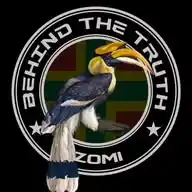
𝔹𝔼ℍ𝕀ℕ𝔻 𝕋ℍ𝔼 𝕋ℝ𝕌𝕋ℍ (𝔹𝕋𝕋)
February 4, 2025 at 04:59 AM
*Day 16: Colonial Fragmentation – The Borders That Broke a People*
There was a time when Zomi villages stretched across the hills, unbothered by the idea of modern state borders. Families moved freely, trading goods and stories, strengthening ties with kin on the other side of what would later become a line on a British-drawn map. But then the colonial rulers came—not to understand the land, but to divide it. They labelled, categorized, and created boundaries that had never existed before, slicing through the Zo Hills with the stroke of a pen.
The arrival of the *British in the Chin Hills in 1896* changed everything. Their expansion into the region meant imposing governance where none was needed, breaking down traditional systems, and redrawing lands to fit their imperial framework. *The Chin Hills Regulation Act of 1896* marked the beginning of administrative separation, isolating *Zomi* communities from their traditional ties with neighbouring regions.
Actual fracture came in 1935 when the *Government of India Act* formally separated *Zogam* into two distinct administrative zones—one governed under British Burma, the other under British India. To the colonial administrators, it was a neat solution. To the Zomi, it was incomprehensible. How could people who shared the same language, traditions, and ancestral land suddenly be told they belonged to different nations? What was once a unified homeland had been split without their consent.
*A Border That Became a Wall*
Colonial rule hardened these divisions, but modern state-making and independence made them permanent. When India gained independence in 1947 and Burma in 1948, the Zomi found themselves trapped between two emerging nation-states—neither fully belonging nor fully represented.
In Burma, the new government absorbed the Zomi homeland into the "_Chin Special Division_," a vague administrative category that gave no absolute autonomy. Burmese nationalists, eager to consolidate power, dismissed federalist aspirations, enforcing linguistic and cultural policies that marginalized non-Burman groups.
In India, the Zored across Manipur, Mizoram, and Assam were placed under state structures that saw them as just another tribal community rather than a people with a shared history. Bureaucratic policies further divided them, reinforcing new categories like "Kuki" and "Mizo," fragmenting their identity even more.
And then came the border—a line that, for decades, remained just that. Under the *Free Movement Regime (FMR),* Zomi families separated by the India-Myanmar border could still visit each other, trade goods, and maintain their shared way of life. The border was there, but it was not a barrier.
That changed in 2024 when the Indian government revoked the FMR, abruptly cutting off thousands of Zomi from their families, their markets, and their ancestral lands and identities. What had once been a manageable restriction became an impenetrable divide—turning routine visits into illegal crossings, transforming neighbours into foreigners.
"_We did not lose our land, but we lost our people,_" said one Zo elder, reflecting on the generations who grew up with relatives just across the hills but now treated as foreigners.
*A Fragmented Identity*
Beyond physical separation, the Zomi were fractured in how they saw themselves. Before the British arrived, identity was fluid. A person was Zomi first, and their village, clan, or dialect came second. However, colonial policies introduced new ethnic classifications, pushing the Zomi into rigid categories that served administrative convenience rather than cultural truth. These divisions, reinforced by post-independence governments, forced the Zomi between their historical identity and the labels imposed upon them by external forces.
And yet, despite a century of fragmentation, the Zomi have never stopped resisting. They have held onto their language, traditions, and kinship networks, even as borders and political realities have tried to erase them. They have redefined what it means to be Zomi—not by the nations that claim them, but by the history they refuse to forget.
*Reflection:*
How do borders drawn by colonial powers continue to shape indigenous peoples' political and cultural struggles today? How can divided communities like the Zomi reclaim unity in the modern world?
*Quote to Highlight:*
_"We did not lose our land, but we lost our people."_
BTT
🔴🟡🟢
https://whatsapp.com/channel/0029VaYCqe71yT229xZ6f42y
❤️
👍
😂
😮
🙏
42